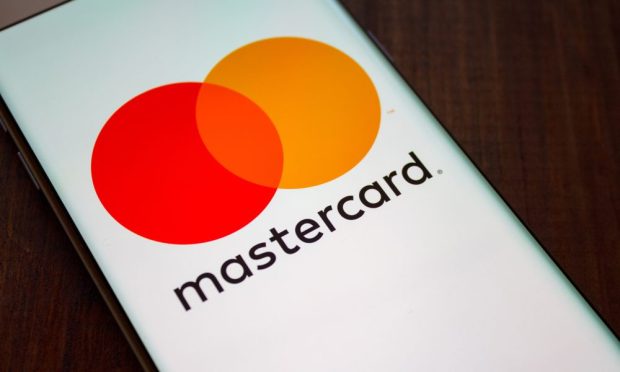Mastercard Launches Real-Time Bill Payments Via Banking Apps

When it comes to paying bills online, banks have come up short in speed and transparency — and customers can’t always use cards if they want. So, they defect to billers. Mastercard is debuting its Bill Pay Exchange — a digital, mobile conduit for automatic reminders and real-time bill payments. Colleen Taylor, EVP at Mastercard, tells PYMNTS that the network of 135,000 built-in billers can help end the monthly paper chase and cement bonds between banks and customers.
Mastercard announced today (Oct. 10) that it is launching Mastercard Bill Pay Exchange — a real-time bill payment and presentment service. This will give issuers the opportunity to recapture ground lost by consumers opting out of online and mobile bill-pay services in favor of visiting biller sites directly to pay their bills.
The Bill Pay Exchange leverages Mastercard’s network of 135,000 billers and the real-time payment capabilities of Vocalink and The Clearing House (TCH) to provide the same direct-biller customer experience via issuer-branded mobile apps for banks that are already part of the Vocalink/TCH real-time payments system.
Colleen Taylor, executive vice president at Mastercard, told Karen Webster that the Exchange “will facilitate consumers getting a great payment experience through their bank that will allow them to get immediate confirmation of that payment. We are doing that through leveraging real-time payments.”
That desire for real-time confirmations comes against a backdrop where, despite all the innovations in online and mobile banking, consumers continue to visit biller websites to schedule and/or make their bill payments — and they do so a lot. Analysts reported that nearly three quarters of online bill payments made in 2016 were done on biller sites, up from 62 percent in 2010.
Consumers are drawn to those biller sites because they are able to view their statements and see their detailed transaction history, rather than simply the balance due. They can dispute charges that look sketchy or that they don’t recognize. They can opt to make those payments using a debit or credit card, and not just the balances in their checking account. They can set up alerts and reminders. And, perhaps most importantly, they can see a confirmation that a payment has posted to their account on the day they pay it.
Today, none of that is possible via the bank-branded online and mobile bill-pay services, and banks are losing ground — now accounting for only 27 percent of online bill payments, down from 38 percent in 2010. Consumers who pay their bills via bank-branded offerings, said Taylor, “get the information that the instruction [to make a payment] has happened, but not that the payment has actually been received by the biller and that the account at that biller has been updated.”
That’s concerning, Taylor said, since bill payment is a sticky bank service that helps issuers build relationships and services around it. That’s a problem Bill Pay Exchange can help issuers solve.
How It Works And How Paying Bills Gets Easier
Taylor told Webster that Mastercard Bill Pay Exchange is available through Mastercard issuers (banks and credit unions), and replicates the features and functions of bill payment via a biller site, including access to biller summary data — a one-stop shop for consumer bill payments. Bill Pay Exchange streamlines the consumer bill-pay setup. Once enrolled, consumers will receive notifications when a bill is due, see transaction details as requested and manage multiple bills.
Beyond the benefits of real-time bill payment, Bill Pay Exchange solves what Taylor called a “very fragmented experience” on the consumer bill payment side, where, traditionally, consumers have had to remember six to 10 sets of credentials to pay bills directly on biller sites.
Via their mobile banking app, explained Taylor, the customer will get a notification that a bill is due, where the request for payment starts with the biller and is then sent through the Bill Pay Exchange. The request, she added, “is routed to the right bank, the bank sends the notification to the mobile device and the consumer gets the notification — and can make the payment right then.” That will include the use of debit and credit cards, which Aite data estimated to be roughly 30 percent of all bill payments.
Bill Pay Exchange will leverage the ISO 20022 messaging standards to present the minimum amount of information needed to make the payments, then provide a more detailed view if necessary, using either PDFs of the bill or a presentation specific to that bank partner.
What’s Next
Taylor said Mastercard is slated to begin product integration and testing of the real-time capability with partners in early 2019, with commercial availability in the second quarter of 2019.
As part of the announcement, ACI Worldwide is among the first of the Mastercard partners to provide this new offering to banks, financial institutions and credit unions, and will facilitate the sending and receiving of real-time payment messages to and from billers. Mastercard has said Aliaswire, Transactis and Inlet are the first digital billing companies to sign on to develop the Bill Pay Exchange with Mastercard.
“Our investment in bill pay has opened up a whole world of opportunity, where we can bring our prowess from our card heritage and couple that with real-time payments,” Taylor told Webster, helping transform a bill payment environment that has not changed much in a few decades.
